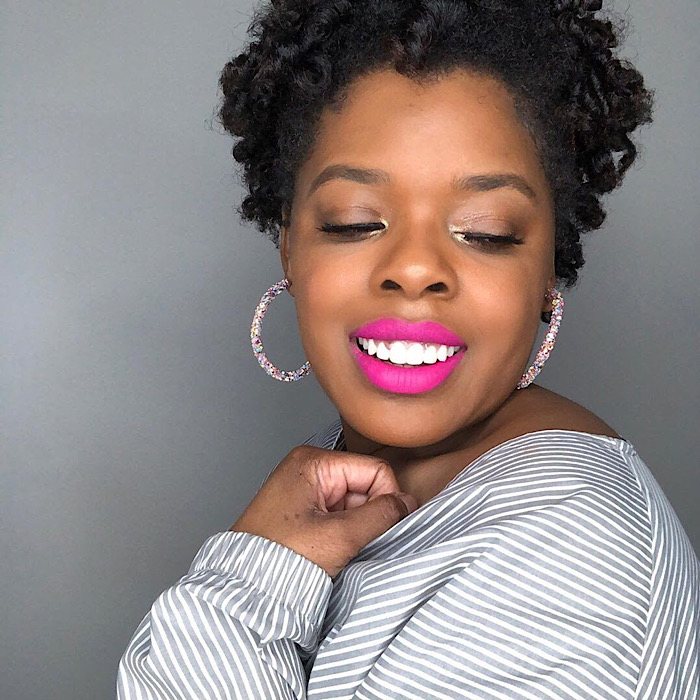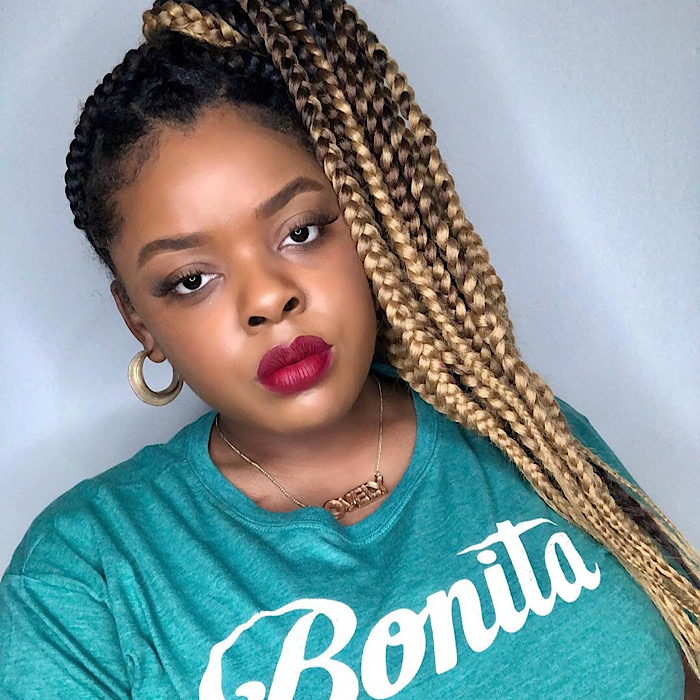During this pandemic many of us have had little to no access to our favorite stylists due to the mandated restrictions from quarantine. This has proved to be a challenge for many of us as we continue to scour the internet for any resources to help achieve our coveted hairstyles. The summer heat calls for protective styles like braids, cornrows, bantu knots, and two-strand twists that not only protect our hair from the elements ,but keep it healthy during swimming, workouts, and limited traveling. If you’re like some curlies, we need a little extra help when it comes to braiding and styling our hair because it’s a disciplined technique that takes continuous practice intertwining fingers, weaves, extensions, and product to create your ideal braids. Detroit native Niani Barracks has created the solution to the problem with “A Safe Space For Black Girls That Never Learned to Braid.”

Image Source: @niani_b
Niani has taken the mastery of braiding in the salon and brought it to the virtual space to be shared and taught with naturalistas all over the world. Natural hair care can not only be expensive with average braiding rates starting anywhere from $100 and up depending on factors like the style, amount of hair, and length of time a stylist spends working with you. If you didn’t grow up braiding your own hair or being taught how to braid, the thought of doing it yourself can be overwhelming, scary, frustrating, and at times embarrassing because it’s such an integral part of Black culture. It can be intimidating to admit you don’t know how to braid and Niani wants to eliminate the shame and stigma that can come with this by helping naturalistas of all hair types to learn how to braid.

Image Source: @niani_b
A person can select their class level by “Never Learned” or “Beginner/Intermediate” that is led by knowledgeable stylists and braiders who share their techniques during the live weekly classes with pre-recorded videos that allow people to work at their own pace. and then are charged a monthly fee starting at $10. The “Never Learned” classes will teach education in basic plait, constructing a basic cornrow, prepping hair, and choosing the right products for your texture. The “Beginner/Intermediate ” sessions start at $19/mnthly elevates your braiding game by combining techniques like twist, adding curls, and incorporating extensions to your look.
Niani’s overall goal is to create a safe space for Black girls to love their natural hair by learning to care for it. After a write-up in the New York Times her platform grew exponentially and she’s begun to have international interest in her classes from parents looking to learn how to style their mixed children’s hair and transracial families with adopted children from Africa. As a mom of two this motivates her to continue teaching and showing the importance of how to properly care for textured hair. While classes are currently booked through August, you can snag a spot on the waiting list for the next series of classes opening up on September 3rd.
While you are waiting to sign up for one of her coveted classes, here are a few tips for braiding your hair at home.
1. Protect and Cleanse Your Hair
You always want to prep your hair by cleansing and shampooing it before you begin styling. Follow up your wash with your favorite deep conditioner and leave-in before blow drying it straight with a heat protectantin order to minimize any damage.
2. Divide Your Hair Into Sections
You want to create as many individual sections as possible depending on how micro or jumbo you plan to make your braids. You should use alligator clips to hold the separate pieces to ensure they don’t tangle and you maintain your part.
3. Incorporating Your Extensions or Weave
Depending on the type of style you create, you may have minimal or maximum extensions to braid into your hair. Synthetic hair can be used for box braids while Kanekalon hair is most often used in twists. You always want to research the type of braids you plan to create, length, and ingredients to ensure you don’t have an allergic reaction.
4. Keep Your Products Nearby
The type of products you use for your braids is so important, make sure you have bought some edge control, gel, or balm ahead of time so it is readily available as you create your braid. Don’t forget to research the type of product that is best suited for your braid so you don’t purchase the wrong product.
5. Be Patient
Even the most experienced braiders have to go slow and steady when constructing their hair. Make sure you have allocated enough time to prep, section, and braid your hair otherwise it’ll end up being rushed and messy. You may hit some road blocks, your fingers could get tired, or you may just need a break, and that’s okay. Don’t give up!
What are your tips for braiding your hair at home? Share them with us in the comments!
